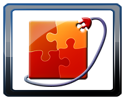Author: Shashank Sharma
Two things annoy me a lot when I’m browsing the Internet. First, I hate unclickable links, where I have to select the text link, open a new tab, paste the link, then press enter. I’d much rather deal with links that I can just click to open. The other issue is being forced to manually edit a URL in the address bar if I want to browse up one level on a site. Linkification and Uppity are two Firefox extensions that make my annoyances go away.

Installing these Firefox extensions, like installing any other Firefox extension, is just a matter of clicking the shiny green Install Now button from the extensions’ homepages. You’ll find both the extensions enabled after a browser restart to complete the installation.
Clickable links
For an example of why you might want to use the Linkification extension, visit its home page. Notice the unclickable links under the Developer Comments section? With the Linkification extension installed and enabled, you can open such links with a single click. By default, all modified links, when clicked with the middle mouse button, the left mouse button, or double-clicked, open in a new tab in the same browser window, and you can’t modify this behavior.
To configure the extension, click Tools -> Addons and then Preferences after selecting Linkification from the list. All configuration settings for the Linkification extension are divided into four tabs on the Linkification Options dialog box. Under the General tab, you can choose whether Linkification should reside in Firefox’s status bar and enable auto-linkification. From the Links tab you can define colors for linkified text. I consider this a convenient option since I like to know just by looking at a link whether I have to thank Linkification for it. Other options under the Links tab let you decide what types of Links should be linkified on any page. For instance, you can configure Linkification to not linkify email addresses or URLs for images.
The extension also has a configurable whitelist/blacklist. Click the Functionality tab and under the Auto-Linkify Whitelist/Blacklist heading, click the “Never Auto-Linkify the following domains” check box. You can then fill in the names of all sites you want the Linkification extension to ignore in the text field at the bottom. You’ll notice that Linkification is configured by default to ignore google.com. Remove it from there, click OK, and make a search on google.com, and you’ll see why google.com is in the blacklist. To similarly create a whitelist, click the “Only Auto-Linkify the following domains” check box. You can enable either the whitelist or the blacklist, but not both at the same time.
The fourth tab on the Linkification Options dialog box is Advanced. You can specify text protocols and their relevant link protocols here. By default, Linkification maps h…s to https, h??p to http, f.p to ftp, and so on. Whenever Linkification encounters one of the protocols in text, it will automatically substitute it with the relevant link protocol and make the link clickable.
Clicking on the Linkification element on the status bar linkifies all text links on the current page whether or not that page is in the blacklist.
Changing levels
To cater to my other complaint, the Uppity extension, when installed, places a green-colored up arrow on the status bar. Every time you click this little arrow when browsing through a Web site, you will navigate up one level on that site. Depending on what Uppity encounters first, it will remove an in-page anchor, query strings, file name, or the last directory from the current URL to move you up. For instance, if you’re reading an article on Wikipedia and have used the Contents menu to jump to a section of the article, when you click the Uppity arrow on the status bar, it will remove the in-page anchor and jump you back to the top of the article. If you click the arrow again, you’ll be taken to the main page.
Similarly, if you’re reading through some forum thread, clicking the Uppity arrow will move you to the parent forum section. And, if you click the Uppity arrow when leafing through pages of search results produced by Google, the query string will be removed and you’ll immediately go back to Google home page.
Every Monday we highlight a different extension, plugin, or add-on. Write an article of less than 1,000 words telling us about one that you use and how it makes your work easier, along with tips for getting the most out of it. If we publish it, we’ll pay you $100. (Send us a query first to be sure we haven’t already published a story on your chosen topic recently or have one in hand.)
Category:
- Internet & WWW

